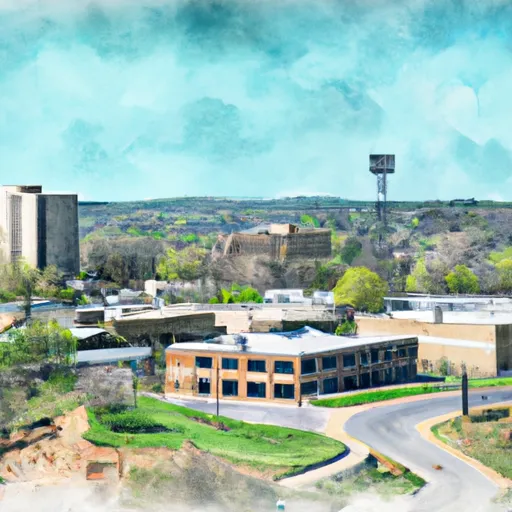-
 Snoflo Premium
Snoflo Premium
Get unlimited access to all our content
With no Ad interruptions! - Start Your Free Trial Login with existing account
Siloam-Springs
Eden Index
Climate
8.2
•
Recreation
5.5
•
Community
2.1
•
Safeguard
5.7/10

Siloam Springs is a charming city located in Benton County, Arkansas. With a population of just over 16,000, it offers a small-town feel with easy access to the amenities of a larger city. The climate in Siloam Springs is characterized by hot summers and mild winters. Average temperatures range from the mid-30s in winter to the mid-90s in summer, with occasional snowfall during the colder months.
The city is situated along the Illinois River, which provides a scenic backdrop and offers various outdoor recreation opportunities. The river is popular for fishing, kayaking, and canoeing. Siloam Springs is also home to the Natural Falls State Park, known for its stunning 77-foot waterfall and picturesque hiking trails.
In terms of hydrology, Siloam Springs benefits from a reliable water supply, with the Illinois River being a major source. The city takes measures to protect and preserve its water resources, ensuring clean and sustainable water for its residents.
Overall, Siloam Springs boasts a pleasant climate, access to the beautiful Illinois River, and outdoor recreational opportunities for nature enthusiasts.
What is the Eden Index?
The Snoflo Eden Index serves as a comprehensive rating system for regions, evaluating their desirability through a holistic assessment of climate health, outdoor recreation opportunities, and natural disaster risk, acknowledging the profound impact of these factors on livability and well-being.
Climate Health Indicator (CHI): 8.2
Siloam-Springs receives approximately
1184mm of rain per year,
with humidity levels near 81%
and air temperatures averaging around
15°C.
Siloam-Springs has a plant hardyness factor of
7, meaning
plants and agriculture in this region tend to thrive during the non-winter months.
By considering the ideal temperature range, reliable water supplies, clean air, and stable seasonal rain or snowpacks, the Climate Health Indicator (CHI) underscores the significance of a healthy climate as the foundation for quality living.
A healthy climate is paramount for ensuring a high quality of life and livability in a region, fostering both physical well-being and environmental harmony. This can be characterized by ideal temperatures, reliable access to water supplies, clean air, and consistent seasonal rain or snowpacks.
Weather Forecast
Streamflow Conditions
Robert S. Kerr Reservoir
Area Rivers
Robert S. Kerr Reservoir
Snowpack Depths
Robert S. Kerr Reservoir
Reservoir Storage Capacity
Robert S. Kerr Reservoir
Groundwater Levels
Recreational Opportunity Index (ROI): 5.5
The Recreational Opportunity Index (ROI) recognizes the value of outdoor recreational options, such as parks, hiking trails, camping sites, and fishing spots, while acknowledging that climate plays a pivotal role in ensuring the comfort and consistency of these experiences.
Access to outdoor recreational opportunities, encompassing activities such as parks, hiking, camping, and fishing, is crucial for overall well-being, and the climate plays a pivotal role in enabling and enhancing these experiences, ensuring that individuals can engage in nature-based activities comfortably and consistently.
Camping Areas
| Campground | Campsites | Reservations | Toilets | Showers | Elevation |
|---|---|---|---|---|---|
| Beavers Bend State Park | None | 460 ft | |||
| Lanagan Access City Park | None | 851 ft | |||
| Queen Wilhelmina State Park | None | 2,521 ft | |||
| Natural Falls State Park | None | 1,079 ft | |||
| Lee Creek Public Use Area | None | 401 ft | |||
| Lake Wedington Rec. Area | 152 | 1,131 ft | |||
| Below the Dam - Lake Wister State Park | None | 462 ft | |||
| Fort Chaffee RV Military | None | 448 ft | |||
| Winding Stair | 23 | 1,961 ft | |||
| Adair State Park | None | 1,100 ft |
Catastrophe Safeguard Index (CSI):
The Catastrophe Safeguard Index (CSI) recognizes that natural disaster risk, encompassing floods, fires, hurricanes, and tornadoes, can drastically affect safety and the overall appeal of an area.
The level of natural disaster risk in a region significantly affects safety and the overall livability, with climate change amplifying these risks by potentially increasing the frequency and intensity of events like floods, fires, hurricanes, and tornadoes, thereby posing substantial challenges to community resilience and well-being.
Community Resilience Indicator (CRI): 2.1
The Community Resilience Indicator (CRI) recognizes that education, healthcare, and socioeconomics are crucial to the well-being of a region. The CRI acknowledges the profound impact of these elements on residents' overall quality of life. By evaluating educational resources, healthcare accessibility, and economic inclusivity, the index captures the essential aspects that contribute to a thriving community, fostering resident satisfaction, equity, and social cohesion.

